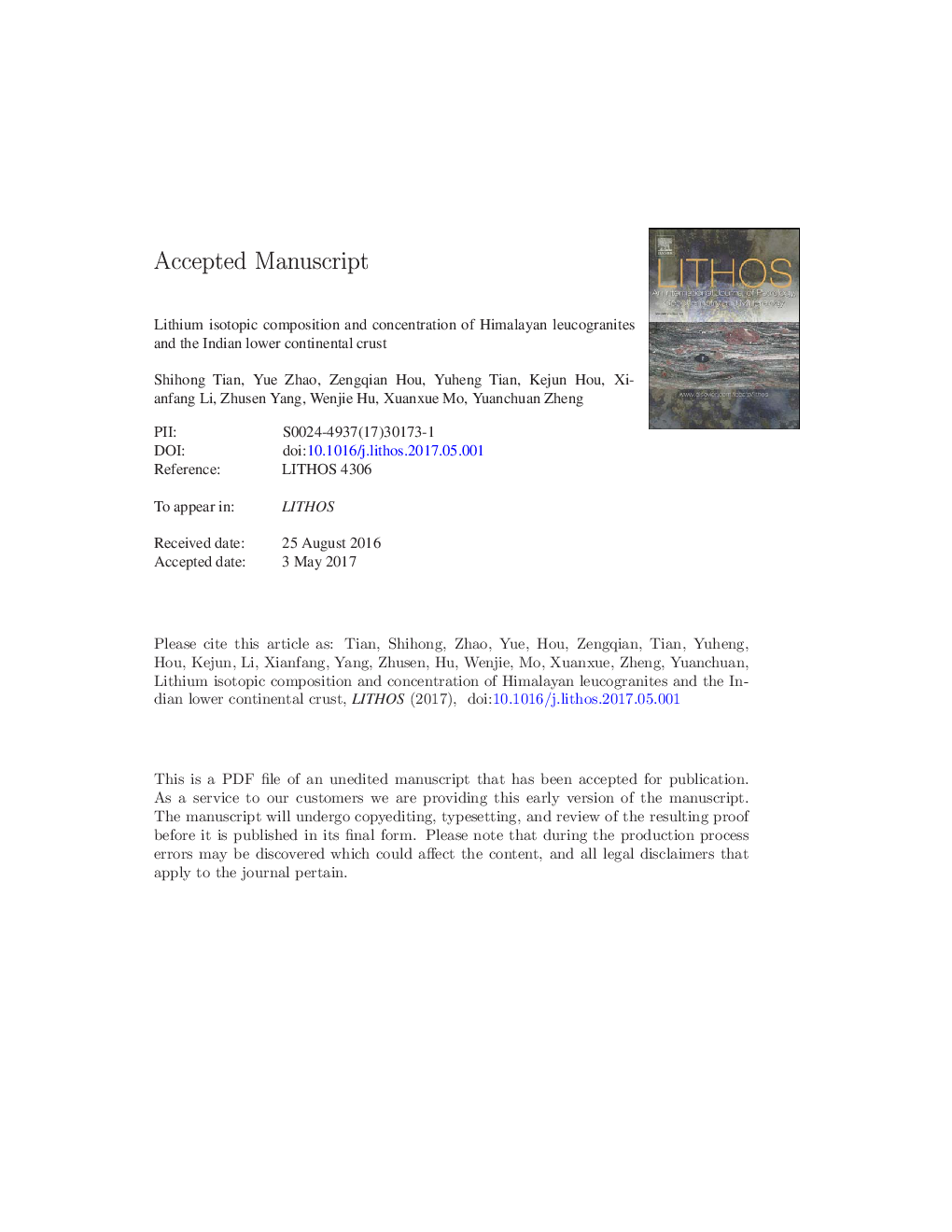| کد مقاله | کد نشریه | سال انتشار | مقاله انگلیسی | نسخه تمام متن |
|---|---|---|---|---|
| 5784049 | 1638630 | 2017 | 55 صفحه PDF | دانلود رایگان |
عنوان انگلیسی مقاله ISI
Lithium isotopic composition and concentration of Himalayan leucogranites and the Indian lower continental crust
ترجمه فارسی عنوان
ترکیبات ایزوتوپی لیتیوم و غلظت لوس غربت های هیمالیا و پوسته قاره ای پایین هند
دانلود مقاله + سفارش ترجمه
دانلود مقاله ISI انگلیسی
رایگان برای ایرانیان
کلمات کلیدی
ایزوتوپهای لیتیم، تجزیه ایزوتوپ، پوسته بالا و پایین هند،
موضوعات مرتبط
مهندسی و علوم پایه
علوم زمین و سیارات
ژئوشیمی و پترولوژی
چکیده انگلیسی
The lithium isotopic compositions of adakitic rocks and K-rich volcanic rocks in southern Tibet range from + 1.3â° to + 7.5â° and â 4.9â° to + 3.5â°, respectively. The subduction of the Indian Plate beneath the Lhasa Terrane means that traditional lithium isotopic compositions of various reservoirs are unable to explain the aforementioned δ7Li data. Therefore, it is necessary to determine the Li isotopic compositions of the different geological endmembers underneath southern Tibet. Here, we report the lithium isotopic composition and concentration of Indian upper and lower continental crust. On the basis of whole-rock major and trace element data and Sr-Nd-Pb isotope data, leucogranites from Luozha and Longzi are considered as representative of Indian upper crust, whereas two-mica granites from Quedang and Dala and granulites and gneisses from Nyalam are considered as representative of Indian lower crust. The Li concentration of Indian upper crust varies from 23 to 45 ppm with a mean of 34 ppm, consistent with a weighted mean Li concentration for the upper crust of 35 ± 11 ppm. In contrast, the Li abundance of Indian lower crust is estimated to be 33-84 ppm with a mean of 58 ppm, much higher than the average Li concentration for the lower crust of ~ 8 ppm because of the high modal abundance of biotite and muscovite. The Li isotopic compositions (+ 0.9â° to + 5.6â°) of Indian upper continental crust are relatively heavy compared with the average Li isotopic composition of upper continental crust. On the other hand, the Li isotopic compositions of Indian lower continental crust (â 4.4â° to â 0.1â°) are lighter than those of Indian upper continental crust. The isotopically heavy signature of Indian upper crust is produced by high-δ7Li fluids released from the Indian lower crust slab, whereas the lighter signature of Indian lower crust is generated by the partial melting of residual Indian lower crust slab during metamorphic dehydration of Indian lower crust.
ناشر
Database: Elsevier - ScienceDirect (ساینس دایرکت)
Journal: Lithos - Volumes 284â285, July 2017, Pages 416-428
Journal: Lithos - Volumes 284â285, July 2017, Pages 416-428
نویسندگان
Shihong Tian, Yue Zhao, Zengqian Hou, Yuheng Tian, Kejun Hou, Xianfang Li, Zhusen Yang, Wenjie Hu, Xuanxue Mo, Yuanchuan Zheng,
